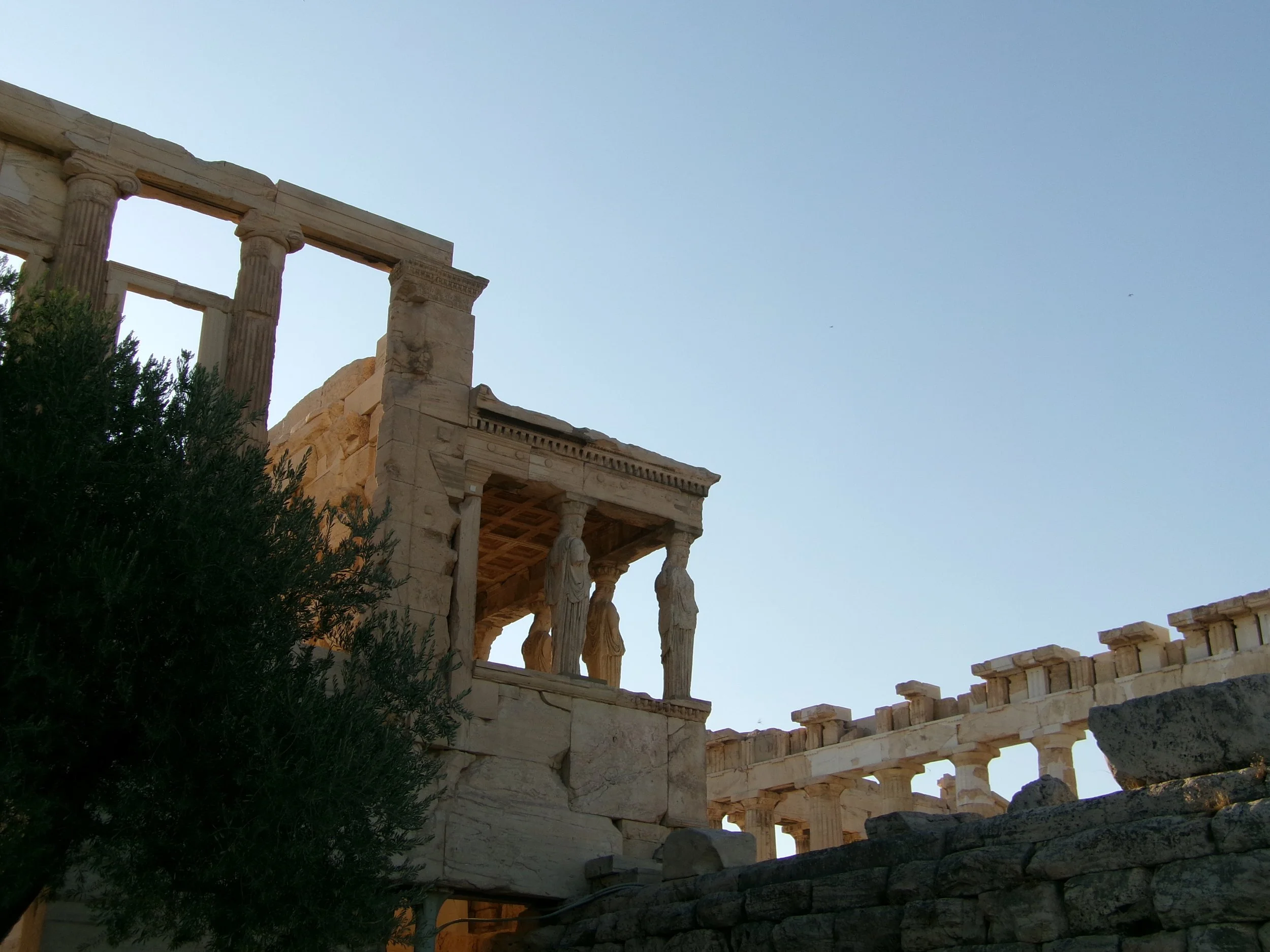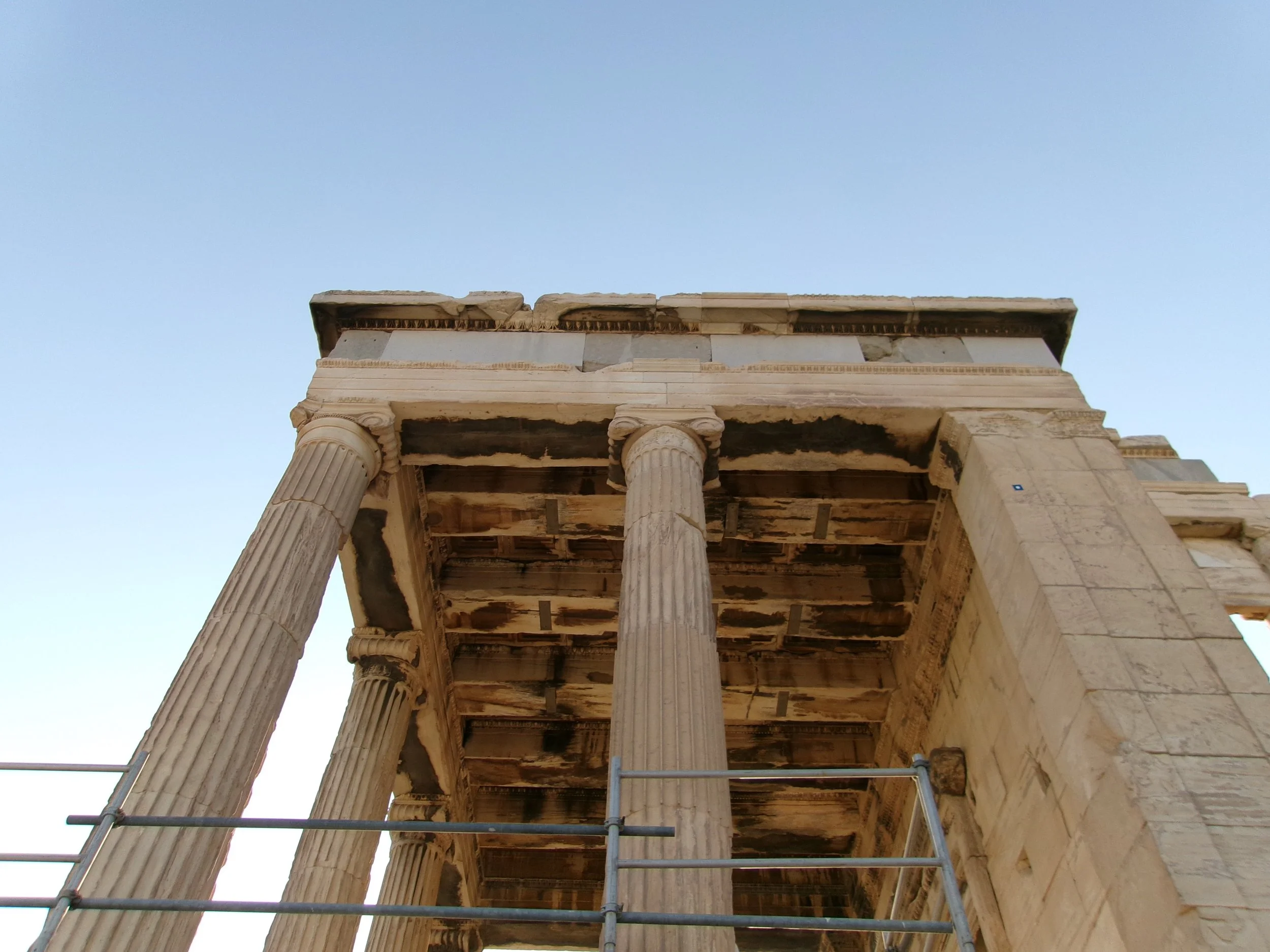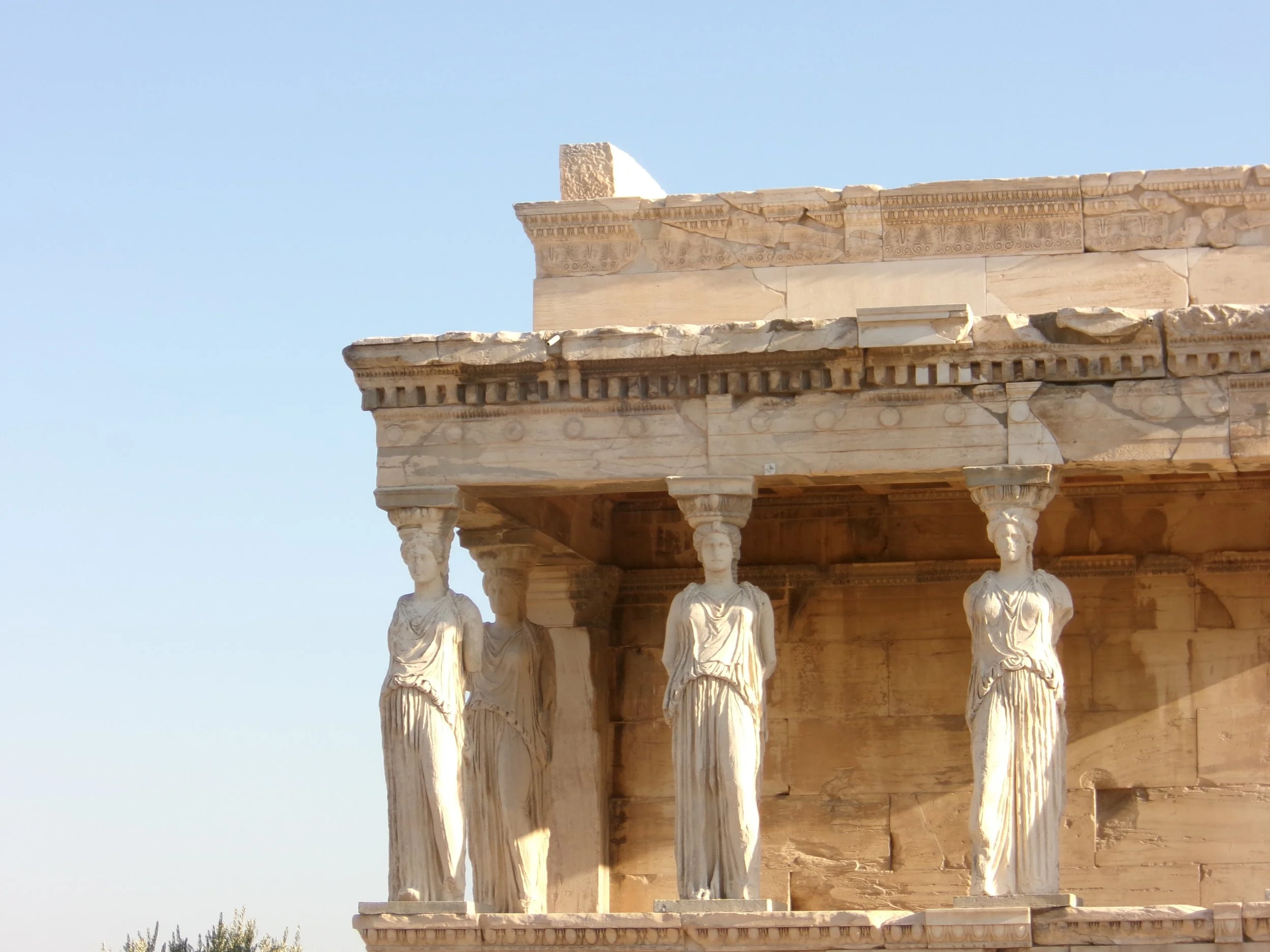Where I Wander: The Acropolis, Athens
Visiting the Acropolis felt like stepping into the blueprint of so much of what we continue to study, reference, and reinterpret in design. Among its storied ruins, the structure that struck me most deeply was the Erechtheion. Unlike the grandeur of the Parthenon, it has a quieter presence, defined by its intricate details and sculptural forms.
The Caryatids—female figures used in place of columns—are both striking and symbolic. They embody the balance of strength and grace, transforming a structural element into something deeply expressive. The carved friezes and fluted columns add another layer of refinement, showing how much meaning can be held in architectural detail.
Built between 421 and 406 BCE, the Erechtheion was dedicated to both Athena and Poseidon, reflecting the layered mythology of Athens itself. Its asymmetrical plan and combination of sacred spaces set it apart from the more uniform temples of the Acropolis. Standing before it today, the structure feels less like a monument and more like a reminder of how history, myth, and design intersect.






